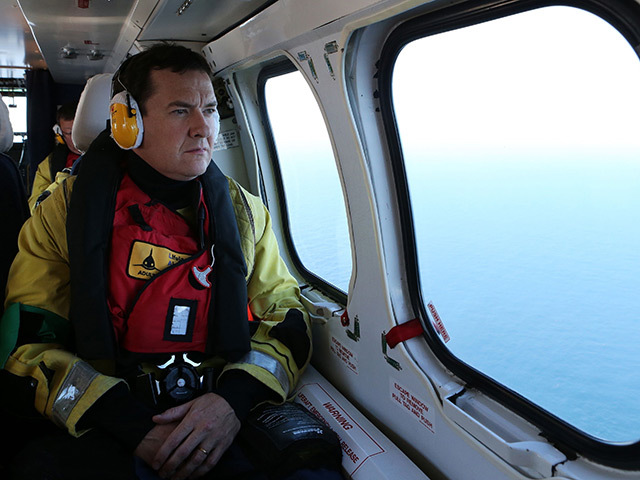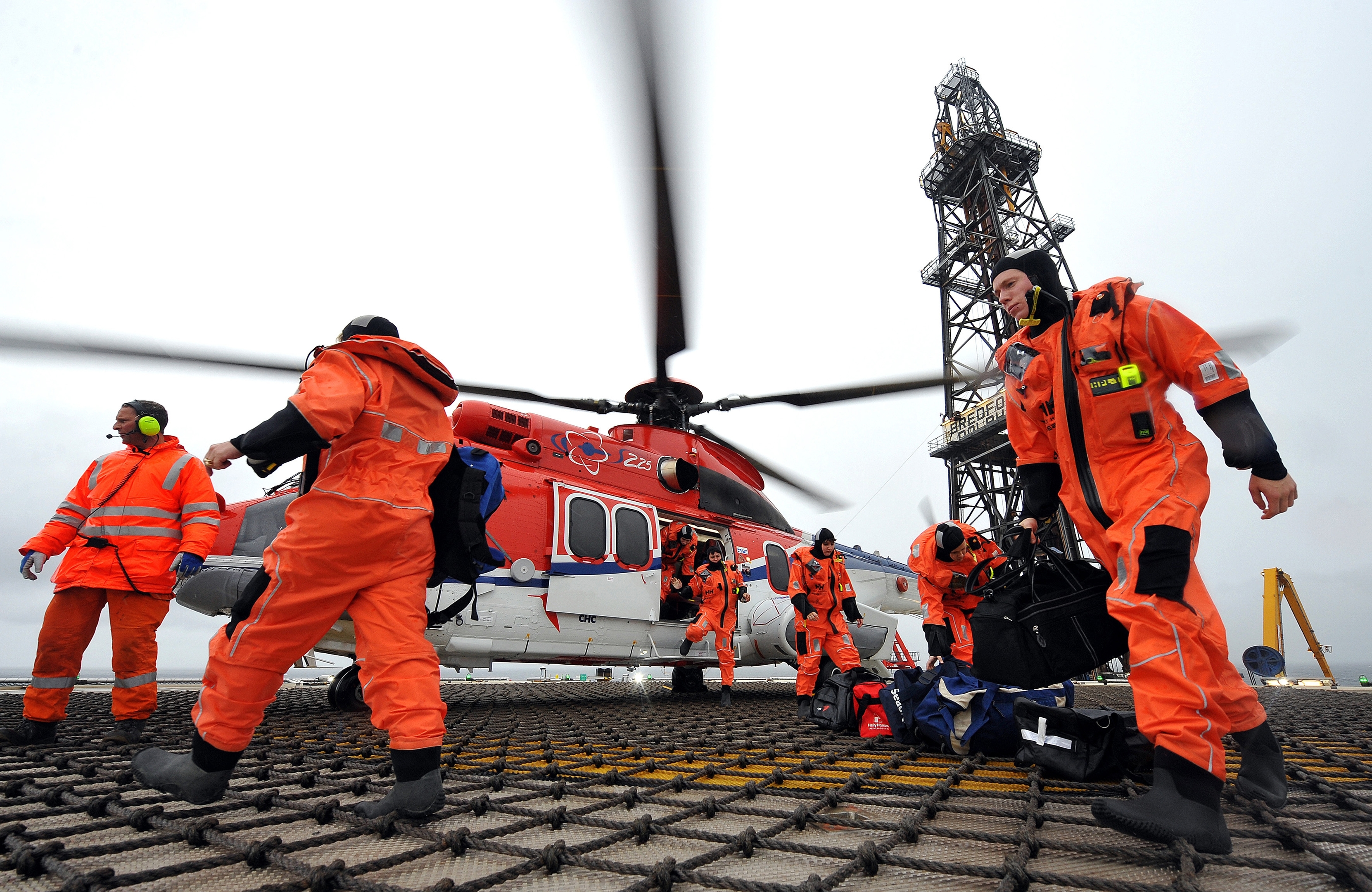
Safety chiefs are to investigate the seating set-up inside offshore helicopters following last month’s fatal accident off Shetland.
One of the four people who died when the Super Puma plunged into the North Sea was unable to escape from the aircraft.
Today we can reveal that a task group made up of industry leaders will investigate whether the way “cramped” workers sit can be made safer.
The news emerged as helicopter operator Bristow confirmed it had returned its Super Pumas to service following last month’s tragedy.
Chancellor George Osborne, who flew to the Montrose platform yesterday on an AS332L model, was one of the first passengers.
Writing exclusively for this newspaper today, the MP paid tribute to those who died on August 23 – George Allison, Sarah Darnley, Duncan Munro and Gary McCrossan.
Ms Darnley’s body was found inside the helicopter three days after the crash. Last night, industry body Oil and Gas UK’s chief executive, Malcolm Webb, confirmed that a review of the way workers are seated when travelling offshore was now being launched “as a priority”.
“One of the concerns which has come up is the seating configuration within helicopters, and the Helicopter Safety Steering Group (HSSG) is putting together a working group to look at that as a priority,” he said.
HSSG’s Les Linklater confirmed that the group would meet later this week to discuss the issues raised by workers.
He said: “Many feel cramped inside the helicopters, so we are going to investigate what this means in terms of cabin configuration, and the size and shape of the people inside the cabin.”
The review of helicopter seating has been welcomed by one of the industry’s leading figures – Wood Group chief executive Bob Keiller.
“If we go back to the Cormorant Alpha fatal accident in the 1990s, that was the last time there was a look into seating configuration,” he said. “At that time there was real concern that one of the seats didn’t have a window. In the past, the industry has examined this and made changes. It is only right that we look again at every aspect of survivability.
“There is scope here for more radical thinking than there has been in the past.
“Despite the fact that the current thinking that a mechanical fault was not to blame for the most recent incident, we had four fatalities.”
Mr Webb said that despite the recent incidents, helicopters – and not boats – were the safest way to get staff onshore and offshore.
“The truth of the matter is that the safest, surest, most comfortable way to transport people to and from North Sea installations is helicopter,” he said. “So it is a vital, vital part of the whole operation. The machines are, in my view, very reliable, but we have had five awful incidents.
“However, it would be foolish to think that there is some kind of alternative.”
Mr Webb said he would not be against a government-led inquiry into helicopter safety – but said it needed to be done quickly.
He added: “We don’t feel precious about that in any way at all. The only thing I would say about that is that we wouldn’t want this too far in the future. It needs to be soon.
“Some public inquiries turn into a lawyer farce which go on forever. But the industry can’t afford that – we need to be making progress.”
Meanwhile Super Pumas are carrying workers offshore again for the first time since last month’s crash.
Operator Bristow Helicopters has resumed passenger flights to the North Sea using a Tiger AS332L from its Aberdeen base. All Super Puma flights to and from UK offshore installations were suspended after an aircraft travelling from the Borgsten Dolphin platform, plunged into the sea without warning on Friday, August 23.
The Helicopter Safety Steering Group declared all Super Pumas safe to fly after two days of talks last week and the Civil Aviation Authority has since ruled that the accident was not caused by a mechanical fault.
The two other North Sea helicopter operators – Bond and CHC – have not confirmed when they will resume passenger flights.
Bond’s EC225s – the model which ditched twice last year – will continue to be phased back into service on a planned schedule and the search and rescue L2’s will be flown in life-at-risk missions. A spokeswoman for CHC helicopters said the operator had not yet made a decision on an exact date to resume Super Puma passenger flights but would continue to use the Augusta Westland 139 and Sikorsky 92 models.
A spokeswoman for Bristow Helicopters added: “We resumed passenger operations with the Bristow Tiger, AS332L on Monday.”
Recommended for you
